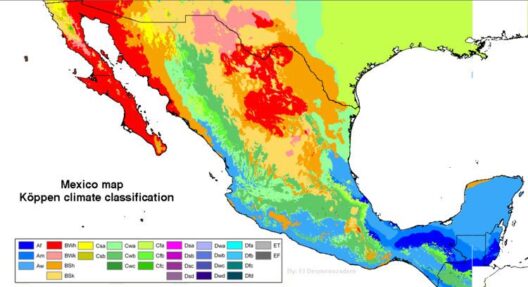The Chernobyl disaster, which occurred in 1986, is often perceived solely as an environmental and human catastrophe—a moment in history that brought forth a consciousness regarding nuclear safety and radioactive waste. However, as the urgency to combat climate change intensifies globally, the ongoing dialogue surrounding Chernobyl has evolved. There is an intriguing, albeit unexpected, discourse around Chernobyl and nuclear energy’s potential role in mitigating the current climate crisis. This exploration invites a comprehensive examination of the nexus between Chernobyl, energy policy, and climate change.
The Chernobyl nuclear disaster caused widespread radionuclide release over the surrounding regions, resulting in an immediate threat to human health and the environment. However, decades later, the expansive exclusion zone surrounding the reactor has paradoxically transformed into a refuge for biodiversity. As flora and fauna began to thrive in this reclaimed land, researchers observed a remarkable resurgence of ecological balance. This phenomena serves as a poignant reminder of nature’s resilience and adaptability. Yet, as we cast our gaze onto the climate change battlefield, one must ponder how the narrative surrounding Chernobyl can expand to inform a sustainable energy future.
The escalating climate crisis demands that societies reassess their energy production methods. Fossil fuels continue to contribute significantly to greenhouse gas emissions. In juxtaposition, nuclear power presents a viable low-carbon alternative that could be pivotal in our transition toward sustainable energy sources. Nuclear energy’s ability to produce vast amounts of energy without the carbon emissions associated with fossil fuels positions it uniquely in the context of climate action. Herein lies the pivotal question: could the stigma surrounding nuclear power, perpetuated by the Chernobyl disaster, diminish as society increasingly prioritizes climate resilience over historical apprehensions?
Nevertheless, the association of Chernobyl with nuclear energy continues to generate polarized opinions. Critics argue that the risks of nuclear energy, demonstrated catastrophically at Chernobyl, outweigh the benefits. They point to the potential for nuclear accidents, the operational challenges, and the long-term issues surrounding radioactive waste management. Conversely, proponents contend that technological advancements and stricter regulatory frameworks have significantly mitigated these risks. They espouse that contemporary nuclear power plants integrate safety features that exceed previous standards, saying, “Lessons have been learned.” This assertion leads to a reevaluation of public perception surrounding nuclear energy and its role in combating climate change.
Delving deeper, it is essential to analyze the geopolitical dimensions of energy policy in conjunction with climate change initiatives. Countries that once shunned nuclear power are reconsidering their positions as climate imperatives mount. In nations like France, and more recently, parts of Eastern Europe, there is a resurgence in nuclear investment as these countries seek to reduce their carbon footprints. This shift is accompanied by a refreshed discourse that emphasizes innovation—spanning thorium reactors to small modular reactors (SMRs) which promise enhanced safety and efficiency.
Additionally, transitioning toward a nuclear-powered framework necessitates a developed human capital base. A comprehensive understanding of nuclear science is pivotal for successful implementation. Educational institutions must also rise to the occasion, developing curricula that not only address nuclear physics but also encompass the socio-political and environmental implications of nuclear energy. This holistic approach could engender a new generation of thinkers and practitioners who view nuclear energy as a cornerstone to climate solutions rather than a relic of past mistakes.
Another aspect worth examining is the potential role of nuclear energy in electrifying emerging technologies aimed at reducing greenhouse gas emissions. Innovations such as electric vehicles (EVs), energy storage solutions, and hydrogen production could dramatically reduce emissions when powered by renewable or nuclear sources. In fact, some researchers advocate for an energy landscape where renewables and nuclear coexist symbiotically, harnessing the strengths of both to create a resilient infrastructure capable of sustaining human advancements while minimizing environmental impacts. This paradigm shift illustrates that rather than viewing nuclear energy through the lens of Chernobyl, it is prudent to focus on its potential to contribute positively to a sustainable future.
However, the conversation does not end here. The discourse surrounding Chernobyl should also invoke ethical considerations regarding energy production and its socio-environmental implications. Marginalized communities often bear the brunt of energy policies, whether they pertain to fossil fuels or nuclear power. Ensuring that the transition to nuclear energy does not inadvertently replicate historical inequities is paramount. An equitable and inclusive approach will not only solidify the foundation for transitioning energy systems but also galvanize public trust and ease societal fears.
In summary, the connection between Chernobyl and climate change may initially appear tenuous, yet it elucidates a transformative narrative regarding the energy conversations of our time. As the world grapples with the existential threat of climate change, the traditional paradigms surrounding nuclear energy must be reassessed. Viewing Chernobyl not solely as a cautionary tale, but as a catalyst for renewed energy perspectives may open pathways to a resilient and sustainable future. It begs for a nuanced dialogue that encompasses historical lessons while championing innovative energy solutions. Ultimately, whether one perceives the discourse on Chernobyl and its implications as fraught with fear or replete with opportunity reflects broader societal values and priorities regarding our planet’s future.






